On January 21, 2021 the Philadelphia Eagles hired Nick Sirianni. Hiring Sirianni was risky. He wasn’t a former NFL or Division I player; instead, his playing career was at Division III Mount Union University. He was also young and lacking in experience. Fans and media alike watched his opening presser intently. Unfortunately, he bombed.
“It ain’t everything, but it is something. He was nervous, anxious, and completely over his ski’s. Imagine walking into a room with 50 Alpha males, you’re going to lose half of them. We buy in if we believe you. That was really hard to believe in.” – Colin Cowherd
“He looked like a deer in headlights. I don’t know what the hell he was talking about. He was mumbling his words. When you’re the guy who has to talk to the media…..my prayers are extended to Nick.”- Steven A. Smith
The pundits claimed the Sirianni era was destined for failure. However, the Eagles just finished the regular season 14-3 and earned the #1 seed in the NFC.
“Things that Make You Go Hmmmm”
As a collegiate baseball coach, I frequently meet with student-athletes and their parents. I’m always looking for red flags. After a campus visit, I like to believe I have a solid sense of the values of the individual.
Here’s the crazy part, two of the all-time best players and people I have coached had major red flags. If the institutions I worked for had athletic scholarship money there is no way we would have invested in them.
Sirianni was loaded with coaching red flags. How could someone with his background and communication skills lead an NFL franchise?
Attracting Top Talent:
When I connect with leaders in sports and business, they inevitably mention the talent shortage. Talent is in demand. However, few organizations are willing to challenge their hiring process.
My personal experience recruiting, coupled with the success of Sirianni, leaves me curious: how can we take risks in the hiring process to ensure we attract top talent into our organizations?
Steps to Consider:
To ensure we are competitive at identifying and attracting “A” players- here’s a framework to consider.
1. Know Thyself: The first step is having a complete understanding of the organization’s shared purpose. Drilling down further, it’s imperative to have defined values which will serve as a pathway for goal attainment. Having a deep knowledge of the purpose and values sets the foundation.
2. Clarity is King: Investing the time and energy to create a thorough job description is critical. What are the skills and competencies necessary? What pain points are we trying to address? What does success (or failure) look like in this role? Creating clarity allows us to think critically about what’s needed functionally and less about the stereotype of the person who should fill the role.
3. You’re Always Hiring: The best leaders are constantly prospecting. They have a deep understanding of the purpose, values, and pain points. Every interaction is a job interview. How do they add value? How can we get creative in attracting this person? Who are some other talented people they know?
4. Do the Homework: Even the best can be fooled. In Malcolm Gladwell’s most recent book, “Talking with Strangers,” he explains how CIA agents, judges, and Heads of States have been duped. To combat this, seeking information from past supervisors, colleagues, and employees is highly recommended. Most organizations do some type of reference check, but I am suggesting a more comprehensive exam.
5. Sing It into Existence: Hiring is a two-way street. Talented people have options. What’s the organization’s story? How does this person impact the future? Storytelling is powerful. We must possess the humility to understand that our offer may not be enough. People want to know how they can contribute and how they can grow.
6. Informal Opportunities: Most interview processes are formal; however, when hired, the interactions become informal. Creating space for conversation is important. This could be done over a meal or on a walk. We observe the candidate in different environments, not just within the buttoned-up interview space.
Conclusion:
Recently, college baseball lost a legend in former University of Texas Coach, Cliff Gustafson. He was once asked what made a great coach: “I’ve found that having better players than the other coach always helps.”
For the foreseeable future, talent will be at a premium. There is truth in the old sports saying, “it’s not about x’s and o’s it’s about Jimmy’s and Joe’s.” Future success depends upon attracting the right people.
It’s time to examine our hiring processes. Have we overvalued things like: a firm handshake, eye contact, educational background, and the reference list?
The future will tell whether or not Sirianni was a good hire. I do believe, however, that the Eagles had a process which allowed them to take a chance on a super talented, but risky candidate. I’m hoping they are rewarded for possessing the courage.
What about you? Have you considered your process? Can you be more intentional when it comes to hiring?
